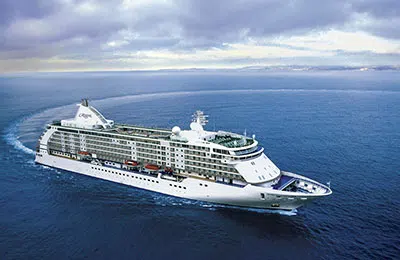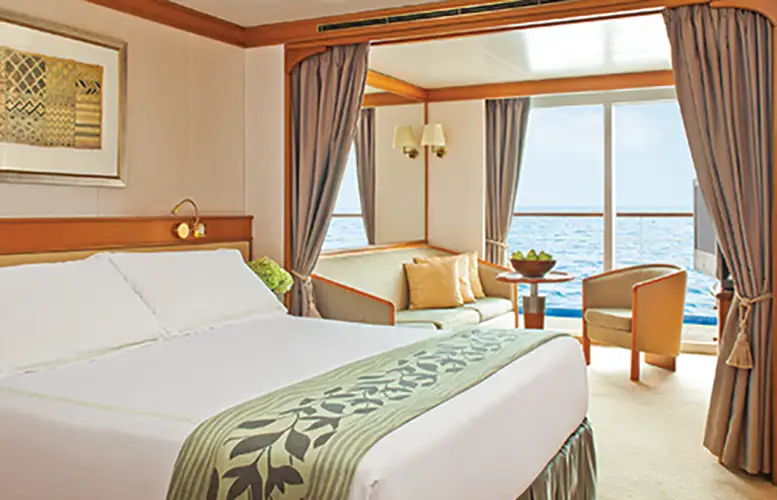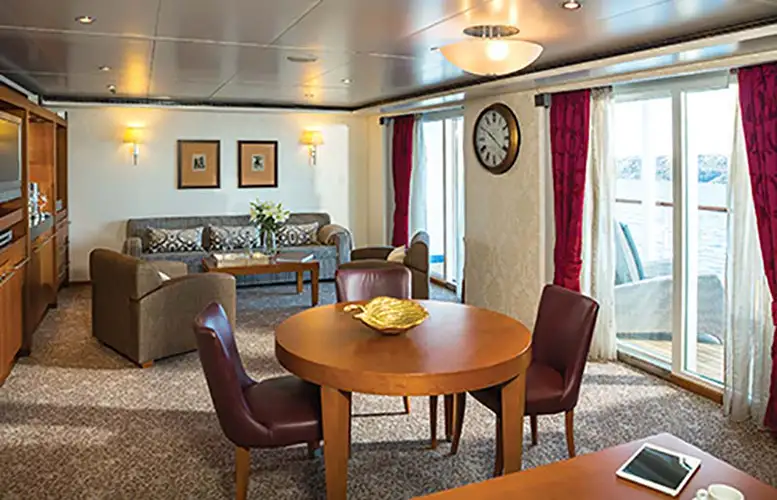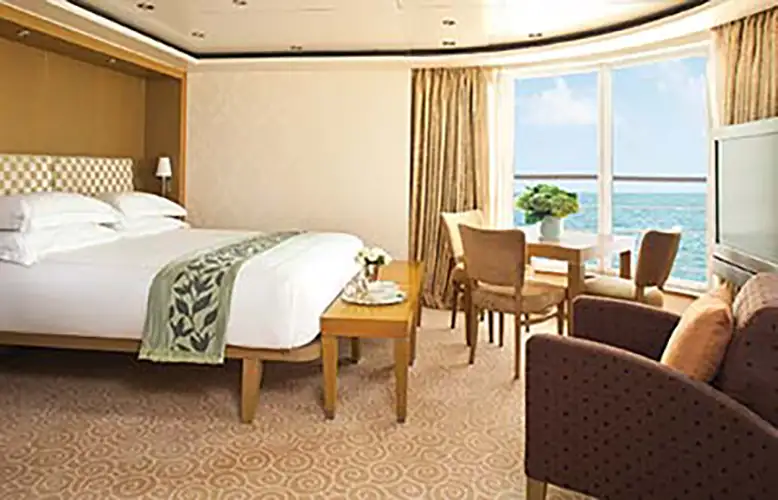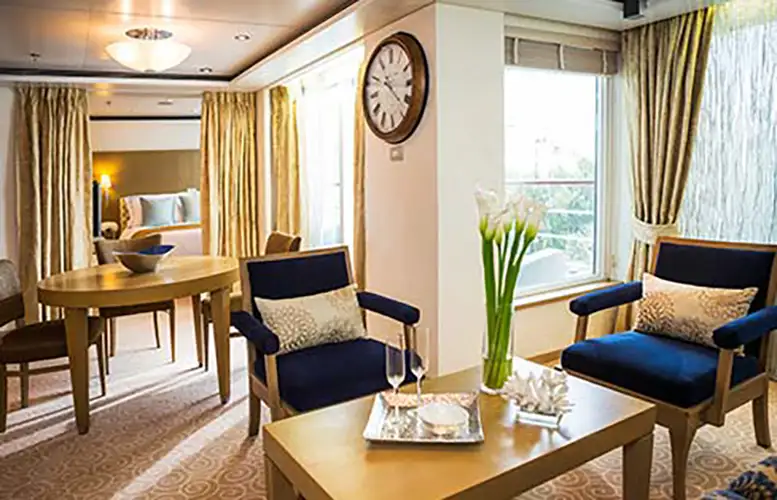Regent Greek islands: 17 nights from Trieste with Seven Seas Voyager
Nov 10, 2026
Italy, Croatia, Montenegro, Greece, Turkey
Cruise itinerary
Departure Port: Trieste ➞
Landing: Istanbul
-
Tuesday, November 10, 2026 - 5:00 PMTrieste
-
Wednesday, November 11, 2026 10:00 AM - 6:00 PMSplit
-
Thursday, November 12, 2026 8:00 AM - 6:00 PMDubrovnik
-
Friday, November 13, 2026 8:00 AM - 4:00 PMKotor
-
Saturday, November 14, 2026Navigation
-
Sunday, November 15, 2026 8:00 AM - 5:00 PMKatakolon
-
Monday, November 16, 2026 11:00 AM - 6:30 PMMykonos
-
Tuesday, November 17, 2026 5:30 AM - 5:00 PMAthens
-
Wednesday, November 18, 2026Navigation
-
Thursday, November 19, 2026 10:00 AM - 5:00 PMSplit
-
Friday, November 20, 2026Navigation
-
Saturday, November 21, 2026 11:00 AM - 6:00 PMHeraklion
-
Sunday, November 22, 2026 8:00 AM - 6:00 PMMykonos
-
Monday, November 23, 2026 8:00 AM - 6:00 PMEphesus
-
Tuesday, November 24, 2026 8:00 AM - 6:00 PMMitilene
-
Wednesday, November 25, 2026Navigation
-
Thursday, November 26, 2026 8:00 AM - not foundIstanbul
-
Friday, November 27, 2026 not foundIstanbul
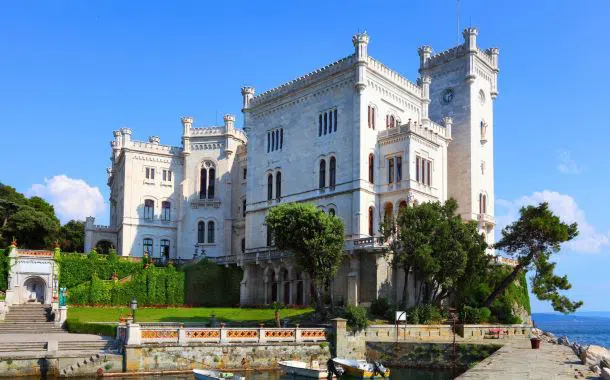
Trieste
Trieste overlooks the Adriatic Sea and it is the starting point of serveral cruise ships. Set sail from Trieste and discover the pearls of the Adriatic, Dubrovink e Kotor, up to reach the enchanting Greek Islands for a unique cruise!
Trieste is a city located in the far end of the Adriatic Sea, in Friuli Venezia Giulia, Trieste is developed on several levels. One of its peculiarities are its wide streets, squares where there are majestic buildings of various architectural styles, they are typical of the Austrian domination era. One feature of the city that is known worldwide is its tourist and commercial port.
The port of Trieste has always been an important commercial centre, for example during the Habsburg Empire it was the main sea outlet for commercial activities.
We suggest you to visit the majestic Piazza dell'Unità d'Italia, that directly overlooks the sea and offers a very suggestive sight. Trieste is a city where the influence of the East is evident both in its traditions and in the local cuisine that has united flavours and various ingredients for unique recipts. The main dishes consist of soups and stews, but also gnocchi and stuffed pasta. If, on the other hand, you want to try a meat dish, don't miss the tasty cevapcici, very spicy meatballs of Balkan origin. While to finish, enjoy a presnitz, a pastry made of puff pastry and dried fruit of Hungarian origin.
If your ship sets sail from Trieste, do not miss the opportunity to visit this city and its most important monuments such as the Molo Audace. From here you can admire the sea before heading towards the Church of Santa Maria Maggiore, built in Baroque style. Not to be missed is the San Giusto Hill and the famous Roman Theatre, which will leave all archaeology lovers speechless.
Trieste: Adriatic Elegance for Your CruiseSet sail from Trieste, Italy, a captivating port city on the Adriatic, known for its unique blend of Italian, Austrian, and Slovenian influences. With its grand Habsburg architecture, bustling Piazza Unità d'Italia overlooking the sea, and a rich literary history, Trieste offers an elegant and culturally rich departure point for your cruise. Before stepping aboard, explore its charming cafes, historical landmarks, and enjoy the city's distinct cosmopolitan atmosphere. Trieste promises a sophisticated and memorable beginning to your Adriatic and Mediterranean adventure.
Discover the Adriatic and Beyond from TriesteCruises departing from Trieste open up a world of possibilities across the sparkling blue waters of the Adriatic and Mediterranean seas. Whether you dream of discovering the picturesque coasts of Croatia, the historical richness of Montenegro, the ancient allure of Greece, or the charming ports of Italy, Trieste serves as an ideal launchpad. Enjoy the seamless transition from the refined elegance of Trieste to the luxurious comfort of your cruise ship, ready for days filled with relaxation, exploration, and unforgettable moments. Each voyage from Trieste promises breathtaking scenery and cultural immersion, leaving you with cherished memories.
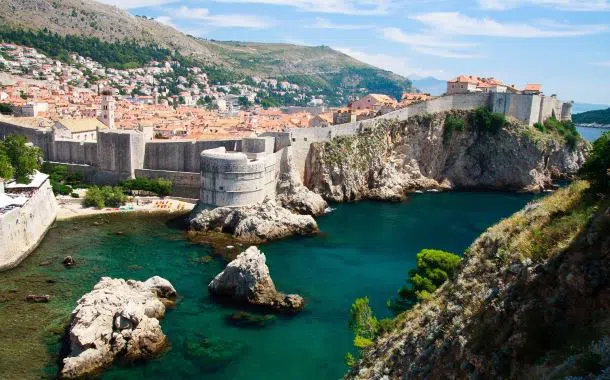
Split
Split is a city in Croatia, the capital of the Split-Dalmatia region, the main center of Dalmatia and, with its 178,192 inhabitants (2011), the second largest city in the country. Split is also a university and archiepiscopal seat.
The name of the city derives from the thorny broom, a very common shrub in the region, which in ancient Greek was called Aspálathos (Aσπάλαθος). Under the Roman Empire the city was called "Spalatum" and in the Middle Ages "Spalatro" in the Dalmatian language. In the Slavic language it is called "Split" while in Italian "Spalato". In the early 19th century the name became "Spljet" and then returned to the form "Split".
Split: Croatia's Adriatic Gem for Your CruiseEmbark on a captivating cruise from Split, Croatia, a vibrant city on the Dalmatian coast, famous for its stunning Diocletian's Palace, a UNESCO World Heritage site. This historical port offers a unique blend of ancient Roman architecture and modern Croatian life. Before setting sail, wander through the palace walls, explore its bustling markets, and enjoy the lively Riva promenade. Split provides a truly immersive cultural experience as your gateway to the enchanting Adriatic Sea.
Discover the Adriatic and Beyond from SplitCruises departing from Split open up a world of possibilities across the sparkling blue waters of the Adriatic and Ionian seas. Whether you dream of discovering the secluded coves of the Croatian islands, the historical richness of Montenegro, or the ancient allure of Greece, Split serves as an ideal launchpad. Enjoy the seamless transition from the vibrant Croatian coast to the luxurious comfort of your cruise ship, ready for days filled with relaxation, exploration, and unforgettable moments. Each voyage from Split promises breathtaking scenery and cultural immersion, leaving you with cherished memories.
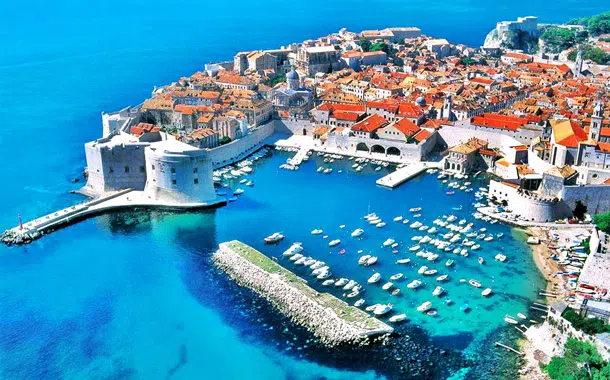
Dubrovnik
Dubrovnik is definitely special. A magnificent curtain wall surrounds marble streets and Baroque buildings exude a pearly light in the Adriatic sun.
Picturesque and artistic, Dubrovnik is a tourist hotspot and port in southern Dalmatia, at the foot of the Srđ mountain. From a historical and cultural point of view, it has been included in the list of UNESCO World Heritage Sites.
Thanks to its beauty and everything it has on offer for tourists, Dubrovnik is one of the most attractive destinations in the Mediterranean, so much so that the city can be visited all year round. In addition to its world-famous architectural heritage, this place has beautiful rocky beaches, pebble beaches and sandy beaches, enjoys a Mediterranean climate and also has lush vegetation. The main pedestrian street, Placa, is a melange of cafes and shops with monuments at each end.
Churches, monasteries and museums adorned with finely carved stone, recall an eventful history and a rich artistic tradition. Beyond the city there is a paradise of beaches, wooded peninsulas and a crystal-clear sea dotted with lush islands.
The city is also known for its delicious cuisine and its infrastructure of hotels for tourists. The city offers a wide selection of first-class restaurants, numerous sport and leisure activities, as well as cultural and entertainment events
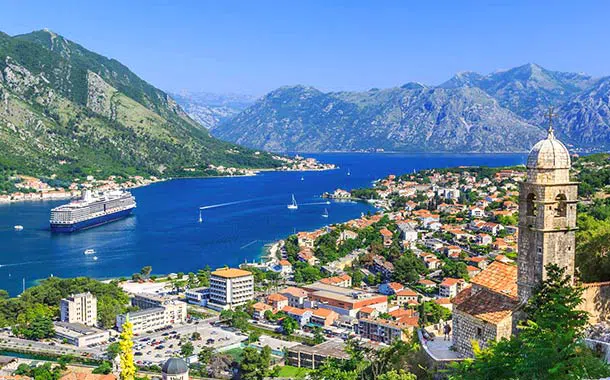
Kotor
The Adriatic Sea penetrates the jagged coast of Montenegro and winds between high mountains until it meets the exquisite and walled medieval city of Kotor.
Along the Adriatic coast of the former Yugoslavia, we find one of the most unique and fascinating European coastal areas, the city hidden in Montenegro, Kotor.
Located at the bottom of a bay, the beautiful medieval city of Kotor is considered a Mediterranean location surrounded by cliffs and an interesting historic wall. The tourist attractions of Kotor are easily reached with a pleasant walk. This small walled city, declared a UNESCO World Heritage Site, has compact dimensions that make it comfortable and easy to visit.
The central part of Kotor was built between the XII and XIV centuries. A historic center surrounded by a rather thick wall, four and a half kilometers long and fifteen meters high. This immense fortified wall reaches the bastion of Sveti Ivan (San Giovanni).
Inside the walls, it preserves an urban network cut into the stone. Its most emblematic work is the Cathedral of San Trifone, built in the 12th century. Inside the church it contains objects and frescoes sculpted during the 14th century. Furthermore, The Orthodox Church of San Nicolas, built between 1902 and 1909 in neo-Byzantine style and that of San Luca (13th century) built in Romanesque and Byzantine style.
Together with the churches, the city includes many palaces that tell its history: the Maritime Museum, located in the Grgurina Palace, a splendid baroque building located in the historic center of the country. The Drago house, with its beautiful Gothic windows, the Prima building, where Renaissance and Baroque lines are combined, the Ducal Palace and the Bizanti, both from the 17th century and the Napoleonic theater in the 19th century.
In Kotor, it is very common to see locals located along the rocky coast in the lower part of the city. In the old part of the area you will find many shops and restaurants that will delight your eyes. This location is the classic ideal city to spend quiet days or for a romantic getaway.

Katakolon
Katakolon is known as the 'gateway to Olympia' in fact it is located just east of the ancient city of Olympia, the birthplace of the Olympic Games.
Katakolon is a seaside town in the municipality of Pyrgos in western Greece. It is located on a picturesque promontory overlooking the Ionian Sea and separating the Gulf of Kyparissia from the rest of the Ionian Sea. It is 11 km west of the center of Pyrgos. The small village of Agios Andreas is located north-west of Katakolon. The port of Katakolon is a very popular stop for cruise ships, offering passengers the opportunity to visit the site of ancient Olympia. Low hills with forests surround Katakolo. In 1865 the Katakolon lighthouse was built. One of the most important sites in Katakolon is the Museum of Ancient Greek technology.

Mykonos
Mykonos is an extremely fun and fascinating place, where the frenetic mix of vacationers, fashionistas and celebrities is magically subdued to the cubist charm of the old town.
Mykonos is famous for being a cosmopolitan destination among the Greek islands and widely recognized as one of the meccas of great tourism. It is one of the most touristy islands in the Aegean Sea. Mykonos tends to be extremely crowded with visitors in July and August. The best time to visit Mykonos is mid-May through June (early in the season, accommodation is much cheaper and it's not that hot), or from September to mid-October.
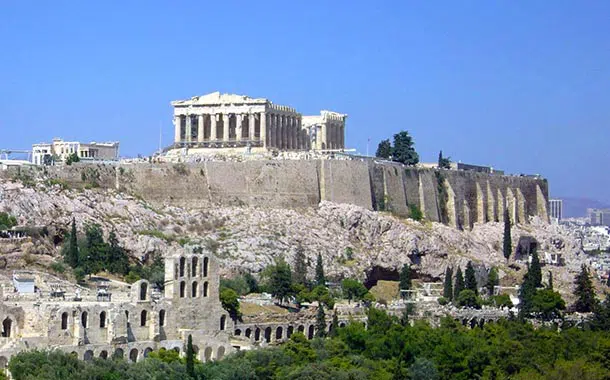
Athens
For many, Athens is a city lived two thousand five hundred years ago. Symbol is the mighty Acropolis which dominates almost every view and itinerary of every visitor, crowned by the iconic Parthenon, stands above the city, watching the sprawling modern metropolis in evolution.
Athens, the capital of Greece, is a city where antiquity and modernity, history and contemporary culture blend in a unique way. Everyone knows that the name of the city derives from the ancient Greek goddess of wisdom and justice. However, few people actually know the legend behind this event. According to myth, Athena and Poseidon, the God of the seas, vied for the right to name the city. Poseidon, to impress the inhabitants, gave them water, while Athena gave them an olive branch.
At first the choice fell on Poseidon, since the citizens considered water the most precious gift. When, once they tasted the water, they discovered that it was salty and not drinkable, they changed their minds and recognized Athena as their patron. One of the most famous historical sites in the city is the Acropolis, a majestic hill topped by ancient Doric temples, including the Parthenon, built in 477 BC. and the Erechtheion, built between 421 and 406 BC. Climbing the Acropolis, tourists can enjoy a breathtaking view of the city and the Aegean Sea. However, Athens is not only history, but also a lively cultural capital. In the Plaka district, located at the foot of the Acropolis, it is possible to stroll through the welcoming streets, visit the traditional Greek taverns and enjoy the authentic atmosphere.
Then there are the numerous cultural activities offered by the numerous museums, galleries and theaters present in the city. Athens is an important port for cruise ships that offer trips to the Mediterranean and beyond. Cruises from Athens allow guests to explore the rich cultural heritage of Greece, including the islands of Crete, Santorini and Mykonos, where you can admire the crystal clear waters of the Aegean Sea and a coast of white houses.
In addition to the Greek islands, cruises from Athens also offer the opportunity to visit other exciting Mediterranean destinations, including historic cities in Italy, Croatia and Turkey. Athens is therefore not only the historical and cultural center of Greece, but also an important starting point for cruises in the Mediterranean, which offers guests the opportunity to immerse themselves in the great history and splendid landscapes of this unique region.
Many still think of Athens as an ancient city that thrived two and a half thousand years ago. Its symbol is the mighty Acropolis, which dominates almost every view and the itinerary of every visitor, and it is crowned by the iconic Parthenon, which rises above the city, overlooking the sprawling and evolving modern metropolis.
Perhaps the most significant change is in the historical centre, which is almost unrecognisable since cars have been banned. This has liberated the area with the most significant archaeological sites, creating the longest, and undoubtedly one of the most splendid, pedestrianised zones in Europe. This huge archaeological park has brought past and present together, returning the cultural and social life of the city to the area around the ancient monuments and surrounding neighbourhoods.
Athens remains a city of contradictions; it is both frustrating and seductive. It is the oldest city in Europe, yet still in a state of transition. It is one of the safest and most vibrant European cities - an intoxicating mix of grunge and grace with an undeniably urban soul.

Split
Split is a city in Croatia, the capital of the Split-Dalmatia region, the main center of Dalmatia and, with its 178,192 inhabitants (2011), the second largest city in the country. Split is also a university and archiepiscopal seat.
The name of the city derives from the thorny broom, a very common shrub in the region, which in ancient Greek was called Aspálathos (Aσπάλαθος). Under the Roman Empire the city was called "Spalatum" and in the Middle Ages "Spalatro" in the Dalmatian language. In the Slavic language it is called "Split" while in Italian "Spalato". In the early 19th century the name became "Spljet" and then returned to the form "Split".
Split: Croatia's Adriatic Gem for Your CruiseEmbark on a captivating cruise from Split, Croatia, a vibrant city on the Dalmatian coast, famous for its stunning Diocletian's Palace, a UNESCO World Heritage site. This historical port offers a unique blend of ancient Roman architecture and modern Croatian life. Before setting sail, wander through the palace walls, explore its bustling markets, and enjoy the lively Riva promenade. Split provides a truly immersive cultural experience as your gateway to the enchanting Adriatic Sea.
Discover the Adriatic and Beyond from SplitCruises departing from Split open up a world of possibilities across the sparkling blue waters of the Adriatic and Ionian seas. Whether you dream of discovering the secluded coves of the Croatian islands, the historical richness of Montenegro, or the ancient allure of Greece, Split serves as an ideal launchpad. Enjoy the seamless transition from the vibrant Croatian coast to the luxurious comfort of your cruise ship, ready for days filled with relaxation, exploration, and unforgettable moments. Each voyage from Split promises breathtaking scenery and cultural immersion, leaving you with cherished memories.
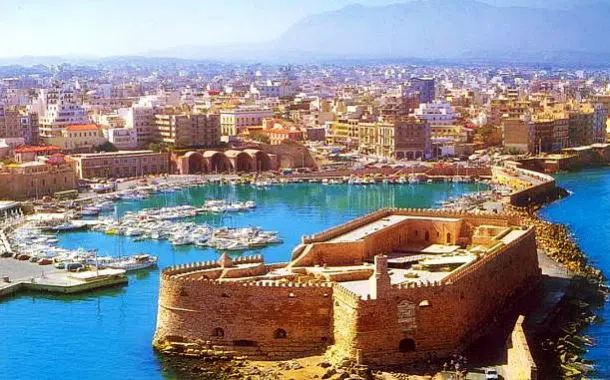
Heraklion
Heraklion is the capital of Cray. It is the largest port and economic center of the island and the third largest city in Greece. This city hosts the archbishop of the Greek Orthodox Church and has religious buildings of great interest.
Heraklion is located in the center of the northern coast of the Greek Islands. With more than 100,00 inhabitants, the city is the capital of Crete, a Venetian fortress during the Middle Ages. The ancient city, with its squares and wide cobbled streets, balconies with wonderful view on the sea, mantains numerous fortifications. In particular there are important and magnificent monuments such as the Church of Agia Ekaterini, dated back to 1555, where the Museum of Sacred Art is hosted. The Archaeological Museum, home to ceramic sculptures, jewellery and frescoes on the Minoan culture. The Historical Museum, home to the only exhibited work of the painter Domenico Theotokopoulos (The Greek), and where you can have a view of Mount Sinai. The Cathedral of St Mena, the patron saint of the city, built between 1862 and 1895 is one of the largest buildings in the area.
Heraklion has an important port and a considerable center for the coastal trade of oil, soap, wine and hides. It has ferry boats and ships with regular itineraries to the islands of Santorini, Ios, Paros, Mykonos, Rhodes, Karpathos and Syros. There are also several daily ferry bgoats to Piraeus, south-west of Athens. The Venetian fortress, still in perfect condition, protects the entrance to the port.
The large combination of reality and mythology, tradition and modernity, make Herklion a cosmopolitan center and one of the most important tourist destination in the Mediterranean. Great beaches, lively nightlife, sunny people, excellent cuisine and the strange "interplay" between the old and the new, guarantees to tourists an unforgettable holiday.
Heraklion is located in the center of the northern coast of the Greek island. With more than 100,000 inhabitants, the locality is the capital and largest city of Crete, a Venetian stronghold during the Middle Ages.
The ancient city, between squares and wide cobbled streets, balconies overlooking the sea, preserves numerous fortifications. Particular importance and beauty are its magnificent monuments such as: the church of Agia Ekaterini, dating back to 1555, is where the museum of Sacred Art is housed. The Archaeological Museum, home to ceramic sculptures, jewelry, and frescoes on Minoan culture. The Historical Museum, home to the only work on display by the painter Domenico Theotokopoulos (El Greco), and where it is possible to have a view of Mount Sinai. The Cathedral of Saint Mena, patron saint of the city, built between 1862 and 1895, is one of the largest buildings in the area.
Heraklion has an important port and a considerable center for the coastal trade of oil, soap, wine, and hides. It has ferries and boats with regular routes to the islands of Santorini, Ios, Paros, Mykonos, Rhodes, Karpathos, and Syros. There are also several daily ferries to Piraeus, southwest of Athens. The Venetian fortress, still in perfect condition, protects the entrance to the port.
The great combination of reality and mythology, tradition and modernity, make Heraklion a cosmopolitan center and one of the most important tourist destinations in the Mediterranean. Large beaches, intense nightlife, sunny people, excellent cuisine, and the strange "game" between the old and the new, assures tourists an unforgettable vacation.

Mykonos
Mykonos is an extremely fun and fascinating place, where the frenetic mix of vacationers, fashionistas and celebrities is magically subdued to the cubist charm of the old town.
Mykonos is famous for being a cosmopolitan destination among the Greek islands and widely recognized as one of the meccas of great tourism. It is one of the most touristy islands in the Aegean Sea. Mykonos tends to be extremely crowded with visitors in July and August. The best time to visit Mykonos is mid-May through June (early in the season, accommodation is much cheaper and it's not that hot), or from September to mid-October.

Ephesus
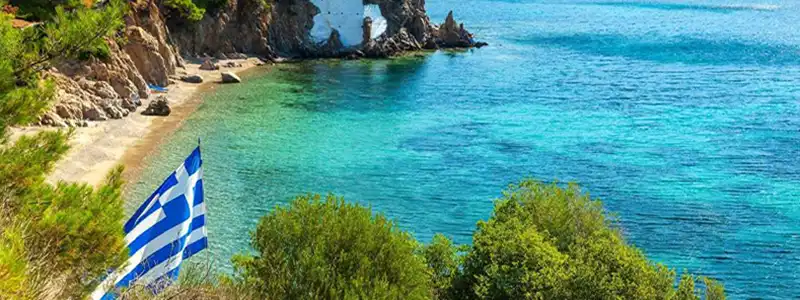
Mitilene
Mitilene is an ancient Greek city, with origins dating back to the 11th century BC. The city is the capital and port of the island of Lesbos, which is located in the north-east of the Aegean Sea. Lesbos has an area of about 1,632 km², with 320 km of coastline, making it the third largest Greek island. The city of Mytilene is located on the south-east coast of the island. It has a large number of neoclassical buildings, public and private homes. Among these, the Prefecture of Lesvos, the old town hall, schools and various houses and hotels that dot the city. The Baroque church of San Therapon, with its imposing style, overlooks the port. Its construction began in the 19th century and was completed in 1935. The port of Mytilene offers navigation services to the nearby islands of Lemnos, Chios and sometimes Dikili Ayvalik in Turkey. It also serves the continental cities of Piraeus, Athens and Thessaloniki. The island has a series of attractions, including cultural (ancient remains), geological, gastronomic and religious. Lesbos was also known, in ancient times, for the quality of its wines, its timber, for ships and for its famous light blue marble. Do not miss the superb Kastro, a fortress built by Emperor Justinian in 527. It houses the ruins of the Gatezulli palace and a Byzantine cistern. If you are a history enthusiast, the archaeological museum is full of mosaics and numerous Neolithic objects. The island's airport is named after the contemporary poet Odysseus Elytis. Lesbos (in Greek: Λέσβος, Lesbos) is a Greek island located in the north-eastern Aegean, in front of the coasts of the Anatolian peninsula. The main center is Mytilene. It is famous for having given birth, in the 7th century BC, to the lyric poets Alcaeus and Sappho. In Sappho's verses we find the exaltation of the beauty of femininity and eros between women, hence the term lesbianism. With an area of 1,630 km² Lesbos is the third largest Greek island by surface area and the eighth in the Mediterranean. Characterized by a conspicuous coastal development (320 km), it has a population of about 90,643 inhabitants at the 2001 census[1], a third of whom reside in the capital Mytilene. From an administrative point of view it is a municipality and peripheral unit consisting of the only homonymous municipality in the periphery of the Northern Aegean.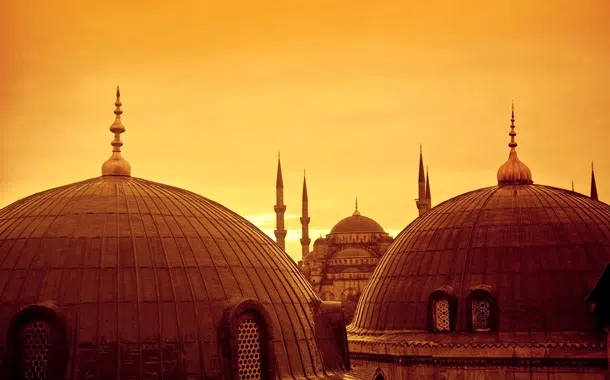
Istanbul
An incredible city, huge, vibrant like few others in the world. Where two continents meet, culture and diversity thrive in a unique architectural setting. Istanbul is hot,and we aren’t talking about the weather. These days there are more restaurants,bars,galleries and clubs around the city than Ottoman mosques(which is not a small feat).
The international fashion and design press has talked about Istanbul to the point of exhaustion; the sense of age that fell over the city once the Ottoman empire disappeared, has been replaced by a sense of energy and innovation not seen since the times of Suleiman the Magnificent.

Istanbul
An incredible city, huge, vibrant like few others in the world. Where two continents meet, culture and diversity thrive in a unique architectural setting. Istanbul is hot,and we aren’t talking about the weather. These days there are more restaurants,bars,galleries and clubs around the city than Ottoman mosques(which is not a small feat).
The international fashion and design press has talked about Istanbul to the point of exhaustion; the sense of age that fell over the city once the Ottoman empire disappeared, has been replaced by a sense of energy and innovation not seen since the times of Suleiman the Magnificent.
